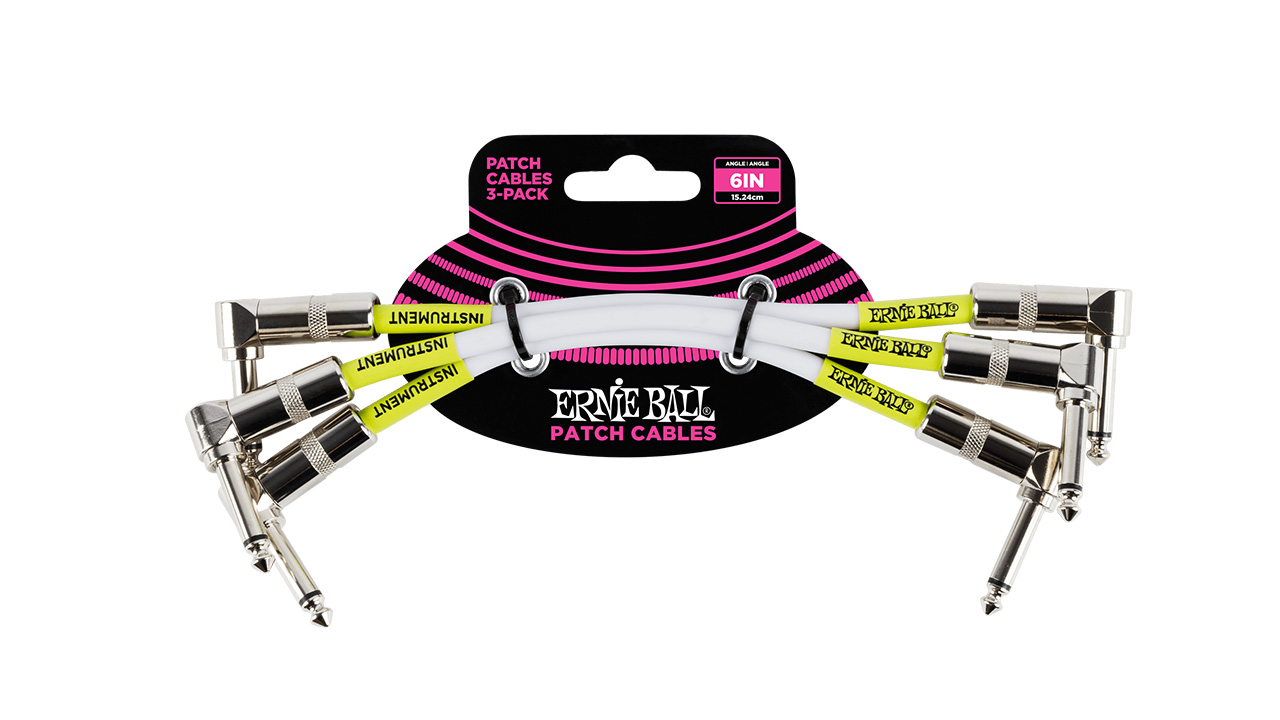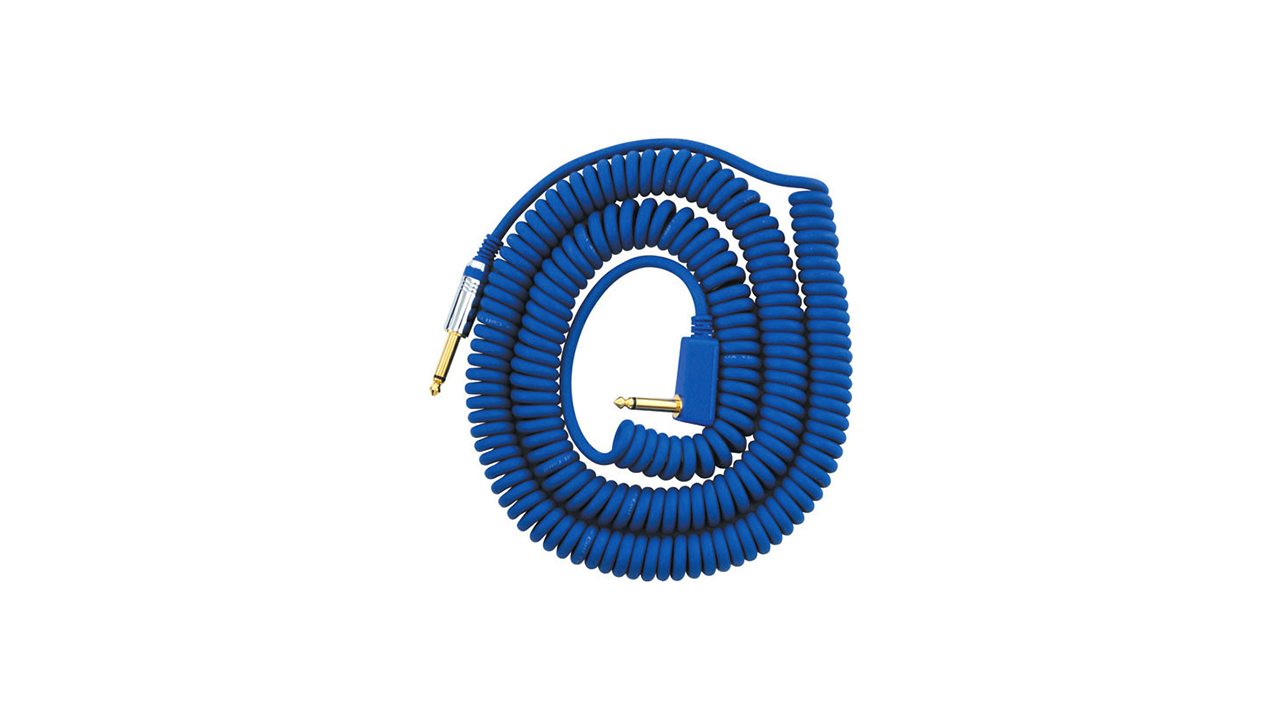
Your guitar cable is a critical link in your signal chain. It’s your first connection from your guitar to an amp or pedalboard, carrying a signal that holds analogue information about your tone. If it’s negatively affecting your signal, you’re losing tone, which is why we have rounded-up the best guitar cables (and patch cables) to combat this.
Guitar cables range in price from a few pounds to hundreds, and the temptation for some of us will be to spend as little as possible so that we have more money left over for more exciting gear such as looper pedals and, of course, electric guitars and acoustic guitars.
The good news is that a small investment should land you one of the best guitar cables in our guide, and one that will last years if you treat it right.
Before we run you through our top picks and impart our expert advice about what to look for, here’s a sneak peak at our current top choice…
What is the best guitar cable right now?
MusicRadar's got your back
The Mogami Gold Instrument Cable is already a familiar sight in recording studios around the world, and the company’s claims of clarity and wide frequency response are founded on a solid reputation – with a lifetime guarantee to boot. Crucially, the price is decent too, which is why it tops our best guitar cables guide.
An oxygen free copper core, carbon impregnated PVC casing and ultra high density sub shield ensure a pro spec. And with lengths available from 2- to 25-feet, and right angled jack options too, most guitarists needs will be covered here.
How to buy the best guitar cable for you
Will buying a better guitar cable improve my guitar tone?
It can definitely change it, though you’ll feel the effects of different guitar cables and patch cables much more if you use passive pickups rather than active. This is where ‘capacitance’ comes into play – capacitance is a buzzword around guitar cables for good reason.
Capacitance has the most noticeable effect of reducing high-end treble in your tone, but it can actually have an effect across the entire spectrum. Combined with the inductors that are your guitar pickups, it can actually add mid-range gain.
The general rule is: the longer your cable length, or the more capacitance the cable itself has for its given length, the more loss of high end you’ll notice. You may even want this, but if you’re lacking some high-end brightness, a low capacitance guitar cable could make a positive difference to your sound.
Understanding capacitance
A capacitor is formed between two electrical conductors that are in close proximity. The larger the surface area of these conductors (in your guitar cable), the larger the capacitance. Large amounts of capacitance is measured in units of farads, so named after 19th century English physicist Michael Faraday.
The smaller amounts found in guitar cables are measured in picofarads (pf); each one million-millionth of a farad. A decent quality audio cable should offer 40pf per foot with the highest quality offering around half that.
Active pickups contain a preamp that offsets any issues with impedance by converting it to low impedance, and it can drive a cable without any loss of high frequency.
Understanding impedance
Impedance (Z) is the measure of the total opposition to current flow in an alternating current circuit. It is made up of the sum of two components, resistance (R) and reactance (X). The output from most electronic audio devices is usually low impedance (around 150ohms), but it can be much higher for passive guitar pickups.
And this means it is more adversely affected by capacitance from a cable to create a filter on your sound – as capacitance and impedance increase, this filter comes into effect more. In theory, the ideal set up for wide frequency response in your tone is a low impedance pickup and low capacitance cable.
When it comes to smaller patch cables between your pedals, their capacitance isn’t as important as the cable that goes between the guitar and the first pedal in your chain. That’s because pedals have low impedance outputs, though if your pedals are true bypass, they’ll have more effect on the overall capacitance in your signal.
The best guitar cables you can buy right now
The Mogami Gold Series Guitar Cable is already used throughout the world for professional audio work in recording and broadcast studios, so it’s unsurprising its range of guitar cables is pro standard. Manufactured in Nagano, Japan, the company publishes the Gold Series’ capacitance rating at a reassuring 39.7pF/Ft – and its build continues that quality.
A conductive PVC layer is placed under the shield conductor to drain away high impedance voltage and to reduce unwanted microphonic noise dramatically. It’s also available in shorter lengths with right-angled connectors for patch cable use.

Ernie Ball 6" Pancake Patch Cable
Reasons to buy
Reasons to avoid
Pedalboard real estate is precious – every inch counts in a pursuit to add more stompboxes. That means we need patch cables to be… less! Ernie Ball clearly understands this because the flat angled ends of this patch cable help move your pedals closer together if needed. A real godsend if you have a mini pedalboard.
We’ve had good experiences gigging with these great value patch cables, and Ernie Ball even makes the Flat Pancake Patch Cable in white as well as the ubiquitous black.

Vox Premium Vintage Coil Guitar Cable
Reasons to buy
Though they’ll give you the classic visual vibe of Jimi Hendrix, Brian May and Jimmy Page, coil cables have a reputation of being inferior due to the added length of cable used to make them and how it may be unnecessarily detrimental to your guitar signal. Vox helps offset that through investing in an unusual copper for an instrument cable.
The audiophile-grade 99.9% purity OFC copper conductors here offer improved clarity – especially in the mid-range. Vox also notes that the multi-gauge design uses bespoke conductor types optimized for specific frequency ranges for a fuller, more organic sound. Using two separate shields also improves noise isolation.

Evidence Audio SIS/Monorail Patch Cable Kit
Reasons to buy
If you need custom lengths for your pedalboard, a solderless kit is an easy, accessible option that won’t require electrician’s skills. And if you’re skeptical about how Evidence get around the lack of soldering on the connections here, rest assured that it’s all about precision for a connection Evidence confidently claims is ‘better-than-soldered’.
The inside of the tips of the brass SIS right-angled plugs (eight are included with the 5ft kit) are precision machined to have threads. These threads cut and re-shape the soft IGL copper conductor of the Monorail cable when turned around it several times. Need more convincing? David Gilmour, Noel Gallagher, Graham Coxon, Guthrie Govan and Radiohead’s Ed O’Brian all use them.
Want all the hottest music and gear news, reviews, deals, features and more, direct to your inbox? Sign up here.

Rob is the Reviews Editor for GuitarWorld.com and MusicRadar guitars, so spends most of his waking hours (and beyond) thinking about and trying the latest gear while making sure our reviews team is giving you thorough and honest tests of it. He's worked for guitar mags and sites as a writer and editor for nearly 20 years but still winces at the thought of restringing anything with a Floyd Rose.